Time for Squat Jumps
Graph potential energy at the maximum height of a jump.
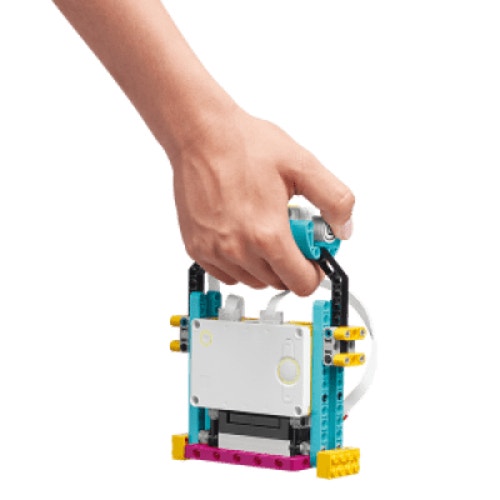
Engage
(Before Class, 20 Min.)
- This lesson explores potential energy. The equation for potential energy is Ep=mgh. The value of ‘g’ is known, and ‘m’ can be found or approximated. The unknown variable in this lesson is the height of a jump, which your students will measure. They'll start by using the Distance Sensor pointing downward to measure their maximum distance from the ground as they jump (make sure that they're on a flat surface). Later on, they'll explore other methods using the Hub's Acceleration Sensor.
Ignite a Discussion
Start a discussion by asking questions related to the lesson. Here are a few suggestions:
- What's potential energy?
- How high can you jump?
- How much (potential) energy is that?
Have your students write down their thoughts as a hypothesis.
Explore
(During the Lesson, 30 Min.)
- Have your students build a kettlebell that can record jump-related data. They can create their own models or follow the building instructions in the app to build the Kettlebell model.
- Ask your students to try out their models using the suggested program.
- Ensure that they control their jumps, pointing the kettlebell straight towards a smooth surface (i.e. avoiding rugs or carpets).
Explain
(During the Lesson, 15 Min.)
- Allow your students some time to adjust their programs to improve their performance.
- Encourage them to record as much data as possible during their experiments.
- Have them export their data as a CSV file so that they can manipulate it using other software if they wish.
Elaborate
(After the Lesson, 25 Min.)
- If your students still have access to their SPIKE Prime Sets, have them complete the tasks given in the SPIKE App. This will help them to elaborate on their learning with a bit of hands-on activity. Here are some examples:
- Ask them to jump with more mass (e.g. while wearing a rucksack) and then describe their potential energy when jumping with the rucksack as compared to without it.
- If your students don't have access to their sets, have them complete their Inventor Notebooks, or assign one of the extension activities that’s been suggested below. Most of the extension activities can be done using the data that was collected during the hands-on session
- Facilitate a sharing session in which your students exchange information. This can be done using whichever method/tool is the most efficient (i.e. in-person or online).
Evaluate
- Give feedback on each student's performance.
- To simplify the process, you can use the assessment rubrics that have been provided.
Assessment Opportunities
Teacher Observation Checklist
Establish a scale that suits your needs, for example:
Partially accomplished
Fully accomplished
Overachieved
Use the following success criteria to evaluate your students' progress:
- The students are able to program a device that logs data on a line graph.
- The students are able to interpret the values coming from the line graph.
- The students are able to explain potential energy in their own words, drawing accurate connections to mass and height.
Self-Assessment
Have each student choose the brick that they feel best represents their performance.
- Blue: I’m able to graph data using the program that’s been provided in the app.
- Yellow: I’m able to create my own line graph and explain my results.
- Violet: I've created new experiments on my own.
Peer Feedback
Encourage your students to provide feedback to one another by:
Having one student use the coloured brick scale above to score another student’s performance.
Asking them to present constructive feedback to one another so that they can improve their group’s performance during the next lesson. This is an excellent opportunity to use videoconferencing tools or blog posting tools in a blended learning scenario.

Differentiation
Simplify this lesson by:
- Asking your students to recreate the experiment using only the Hub (and possibly the Distance Sensor)
- Making sure that your students have adjusted the program that’s been suggested in the SPIKE App to match the configuration of their models
- The data should be relevant for logging acceleration values as long as the Hub is held perpendicular to the ground
Take this lesson to the next level by:
- Asking your students to find other ways to determine the height of a jump, for example:
- Using the Hub's Acceleration Sensor
- Using a video of their jump(s)
- Using only time
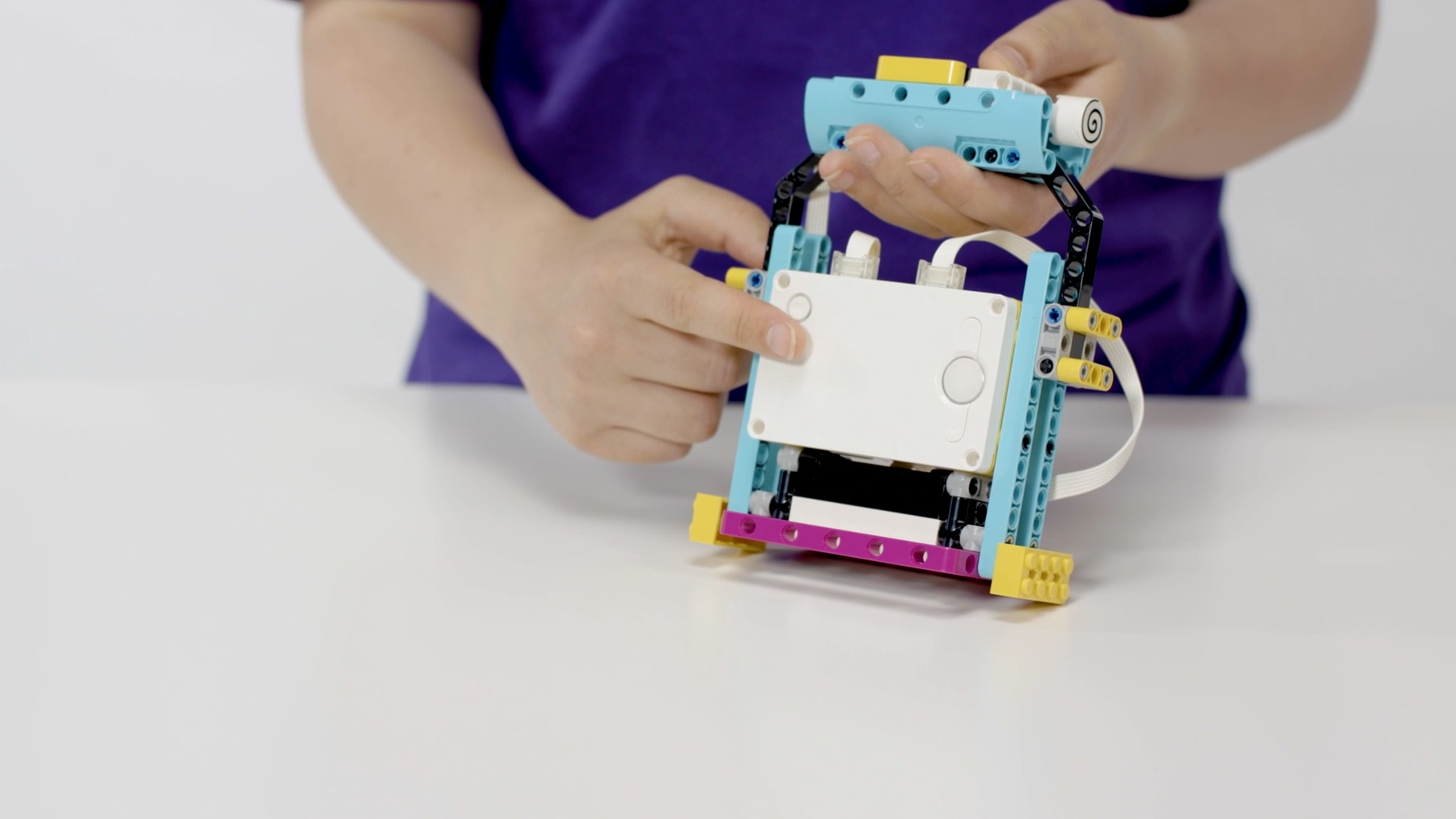
Tips
Building Tips
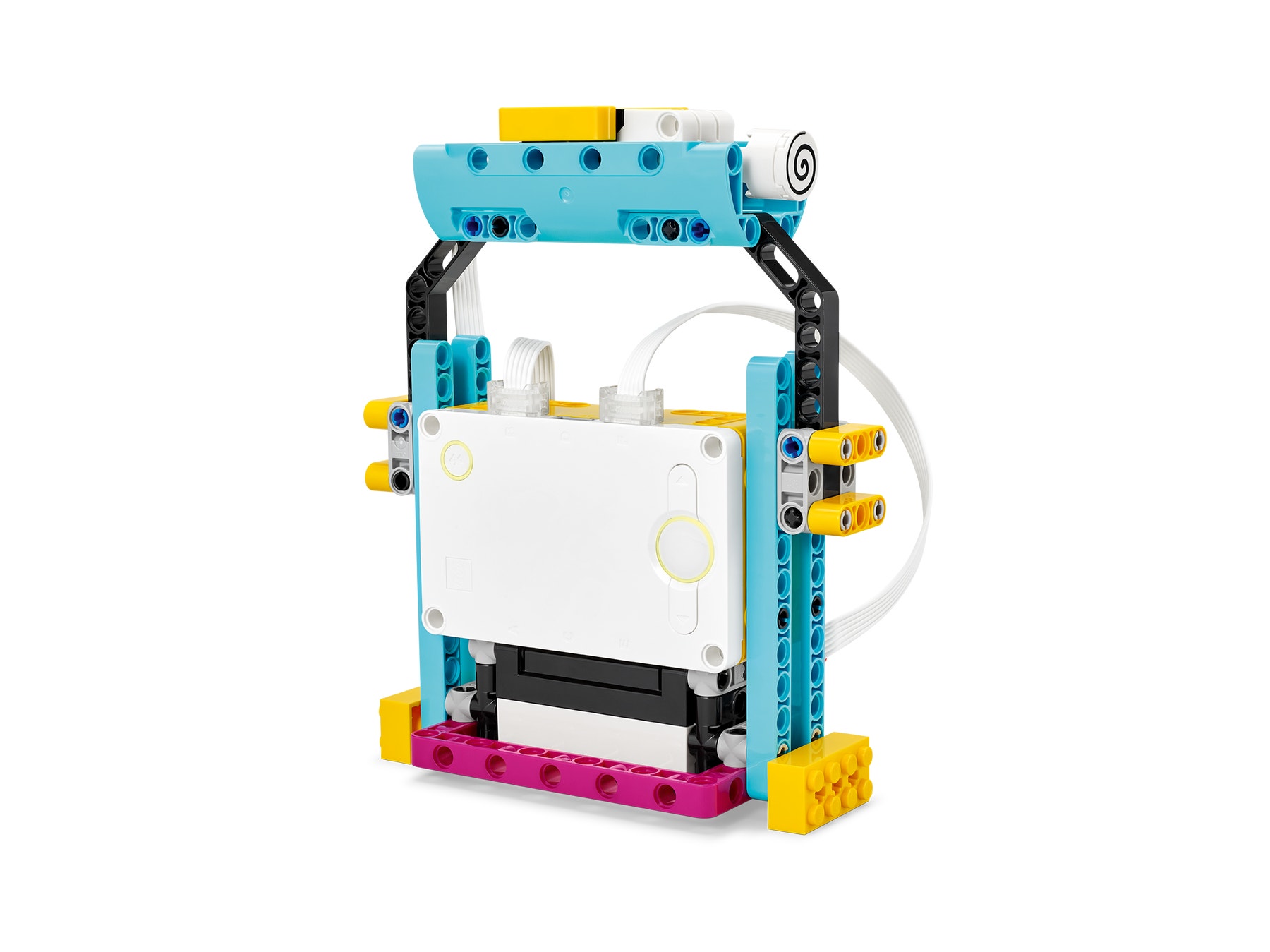
Coding Tips
This lesson is designed to be played while the hub is connected through USB or Bluetooth. While connected, the data collected by the Hub is streamed directly to your device and traced in real-time on the Line Graph.
Main Program

Solution Program

Science Data Tips
Here’s an example of the data your students can expect from this experiment.
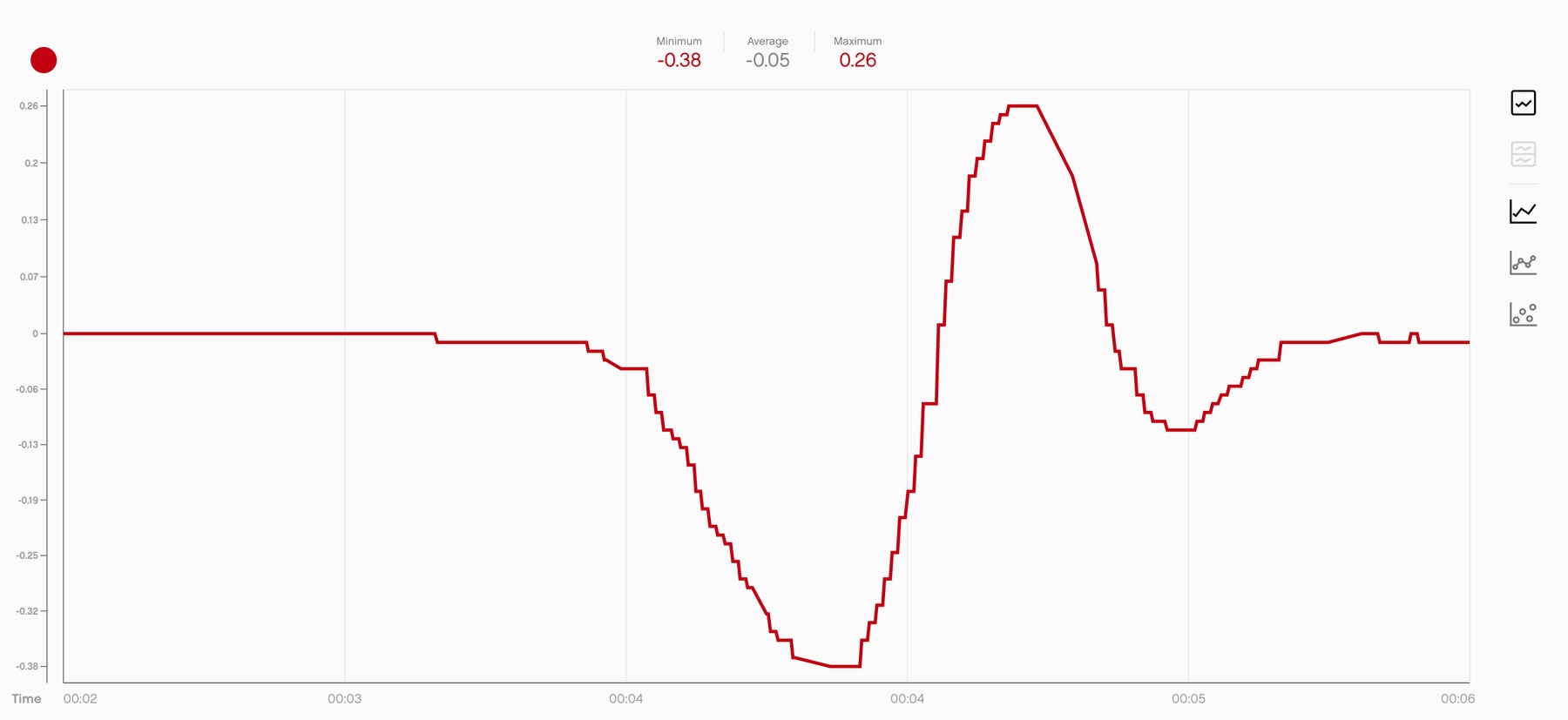
Extensions
Maths Extension
To incorporate the development of maths skills:
- Instead of using the Distance Sensor to directly log the distance between the bottom of the kettlebell and the ground, ask your students to use acceleration values to find the height of the jump.
- Have your students use both methods (i.e. directly measuring the distance, and calculating it based on acceleration values) to find the potential energy. Then ask them to describe which method they thought was the hardest or the most efficient, and why.
Note: This will require additional time.
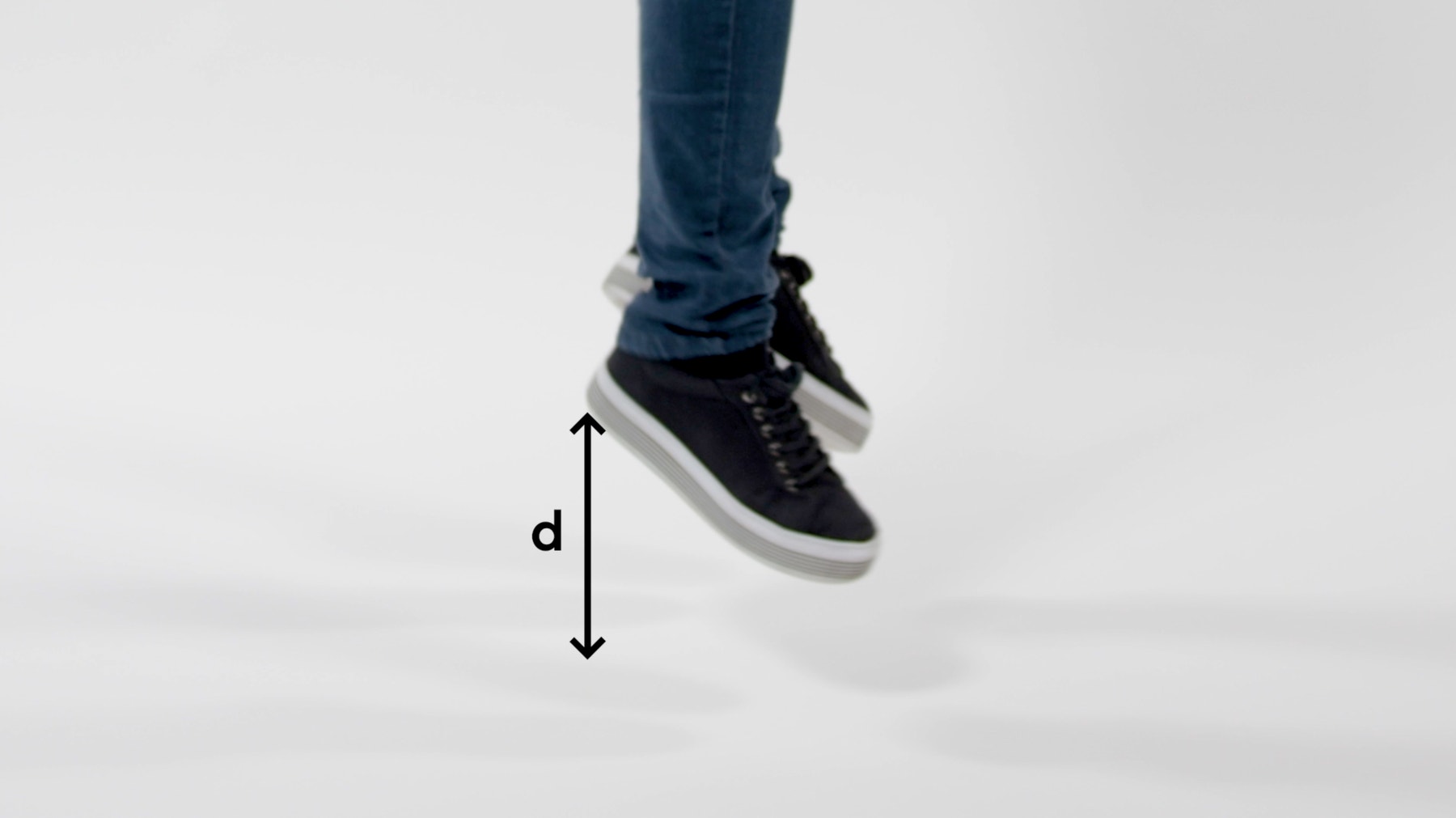
Literacy Extension
To incorporate the development of literacy skills:
- Ask your students to write a short explanation explaining what happens when someone jumps. Have them research muscular strength and biomechanics, then compare human jump performance to that of different animals.
- Have your students investigate a robot prototype that can jump, then write an essay describing how its engineers have tried to replicate muscular impulse.
Note: This will require additional time.
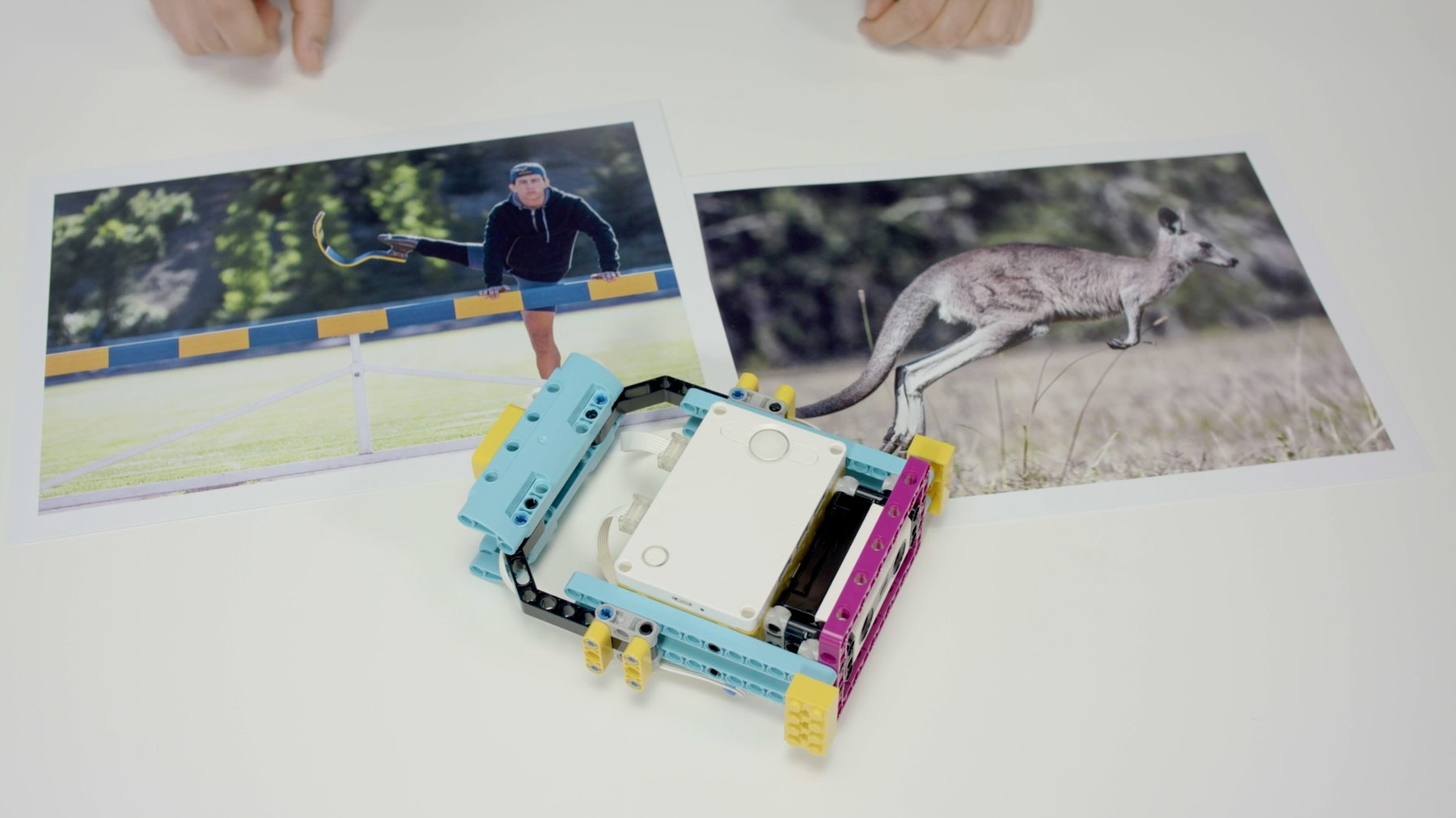
Career Links
The students who enjoyed this lesson might be interested in exploring these career pathways:
- Therapeutic Services
- Engineering & Technology
Teacher Support
Students will:
- Explore ways of measuring the height of a jump
- Use this value to calculate potential energy
LEGO® Education SPIKE™ Prime Set
Device with the LEGO Education SPIKE App installed
ACSIS125
Collaboratively and individually plan and conduct a range of investigation types, including fieldwork and experiments, ensuring safety and ethical guidelines are followed.
ACSSU155
Energy appears in different forms, including movement (kinetic energy), heat and potential energy, and energy transformations and transfers cause change within systems.
ACMNA208
Solve problems involving direct proportion. Explore the relationship between graphs and equations corresponding to simple rate problems.
ACMNA193
Plot linear relationships on the Cartesian plane with and without the use of digital Technologies.
ACMNA194
Solve linear equations using algebraic and graphical techniques. Verify solutions by substitution.
ACMNA178
Given coordinates, plot points on the Cartesian plane, and find coordinates for a given point.
ACELY1725
Plan, draft and publish imaginative, informative, and persuasive texts, selecting aspects of subject matter and particular language, visual, and audio features to convey information and ideas.
ACELY1723
Use comprehension strategies to interpret, analyse and synthesise ideas and information, critiquing ideas, and issues from a variety of textual sources.
ACTDIP028
Design the user experience of a digital system, generating, evaluating, and communicating alternative designs.
ACTDEP036
Generate, develop, test, and communicate design ideas, plans and processes for various audiences using appropriate technical terms and technologies including graphical representation techniques.




